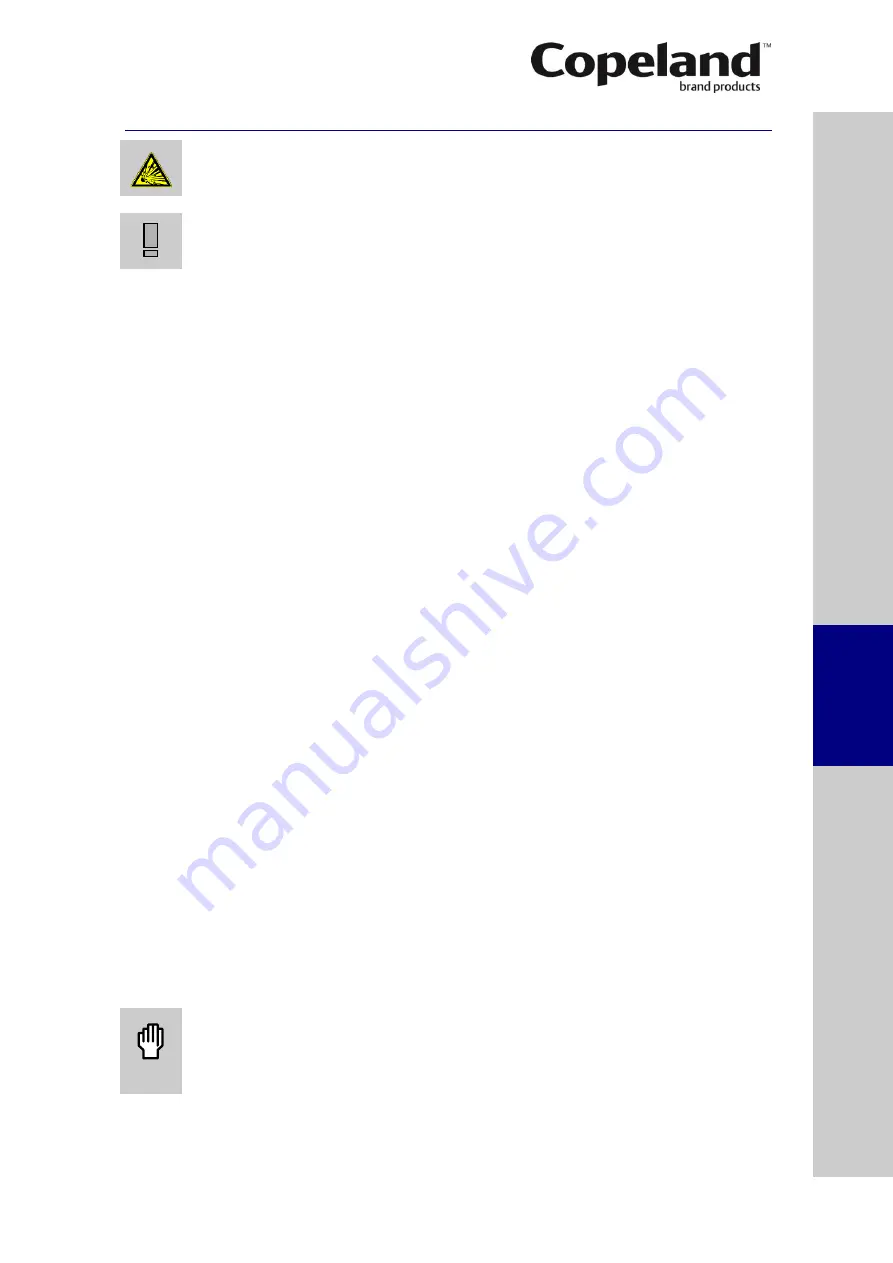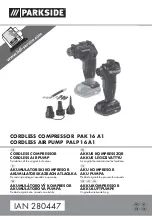
D6.3.4/0715-0716/E
23
5
Starting up & operation
WARNING
Diesel effect!
Compressor destruction!
The mixture of air and oil at high
temperature can lead to an explosion. Avoid operating with air.
IMPORTANT
Oil dilution! Bearing malfunction!
Turn the crankcase heater on 12 hours
before starting the compressor.
5.1
Leak test
The suction shut-off valve and discharge shut-off valve on the compressor must remain closed
during pressure testing to prevent air and moisture from entering the compressor. The test
pressure (dried nitrogen) must not exceed 20.5 bar provided no other system component
pressure is lower. In this case the lower pressure is the test pressure.
5.2
System evacuation
Before the installation is put into commission, it has to be evacuated with a vacuum pump.
Proper evacuation reduces residual moisture to 50 ppm. The installation of adequately sized
access valves at the furthest point from the compressor in the suction and liquid lines is
advisable. To achieve undisturbed operation the compressor valves are closed and the system
is evacuated down to 0.3 mbar / 0.225 Torr. Pressure must be measured using a vacuum
pressure (Torr) gauge on the access valves and not on the vacuum pump; this serves to avoid
incorrect measurements resulting from the pressure gradient along the connecting lines to the
pump. Then the compressor must be evacuated.
Due to the factory holding charge of dry air the compressor is under pressure (approximately 1
to 2.5 bar); this is to indicate the compressor does not leak.
When plugs are removed from the compressor in order to connect a pressure gauge or to fill in
oil, the plug may pop out under pressure and oil can spurt out.
5.3
Preliminary checks
– Pre-starting
Discuss details of the installation with the installer. If possible, obtain drawings, wiring diagrams,
etc.
It is ideal to use a check-list but always check the following:
Visual check of the electrics, wiring, fuses etc
Visual check of the plant for leaks, loose fittings such as TXV bulbs etc
Compressor oil level
Calibration of HP & LP switches and any pressure actuated valves
Check setting and operation of all safety features and protection devices
All valves in the correct running position
Pressure and compound gauges fitted
Correctly charged with refrigerant
Compressor electrical isolator location and position
5.4
Charging procedure
CAUTION
Low suction pressure operation! Compressor damage!
Do not operate
with a restricted suction. Do not operate with the low-pressure cut-out
bridged. Do not use compressor to test opening set point of high-pressure
cut-out.
The system should be liquid-charged through the liquid-receiver shut-off valve or through a valve
in the liquid line. The use of a filter drier in the charging line is highly recommended. The majority
of the charge should be placed in the high side of the system to prevent bearing washout during
first-time start on the assembly line.
S
afet
y
in
struct
ion
s
P
ro
d
u
ct
d
es
cr
ipt
ion
Inst
all
atio
n
E
lec
tr
ica
l
con
n
ec
tion
S
tar
ting
up
&
o
p
er
atio
n
Ma
int
enan
c
e &
repai
r
T
ro
u
b
le
-
sho
o
ting
Dismant
ling
&
d
ispo
sa
l
















































